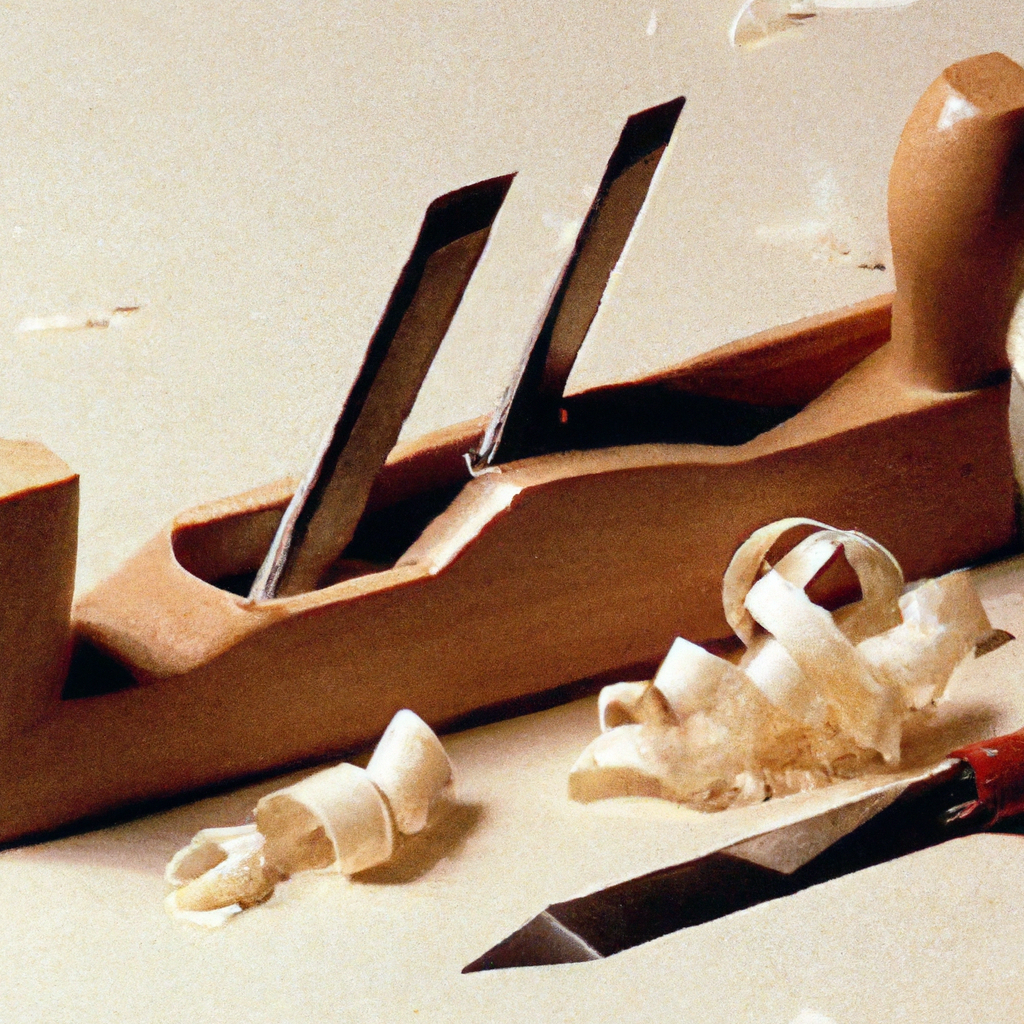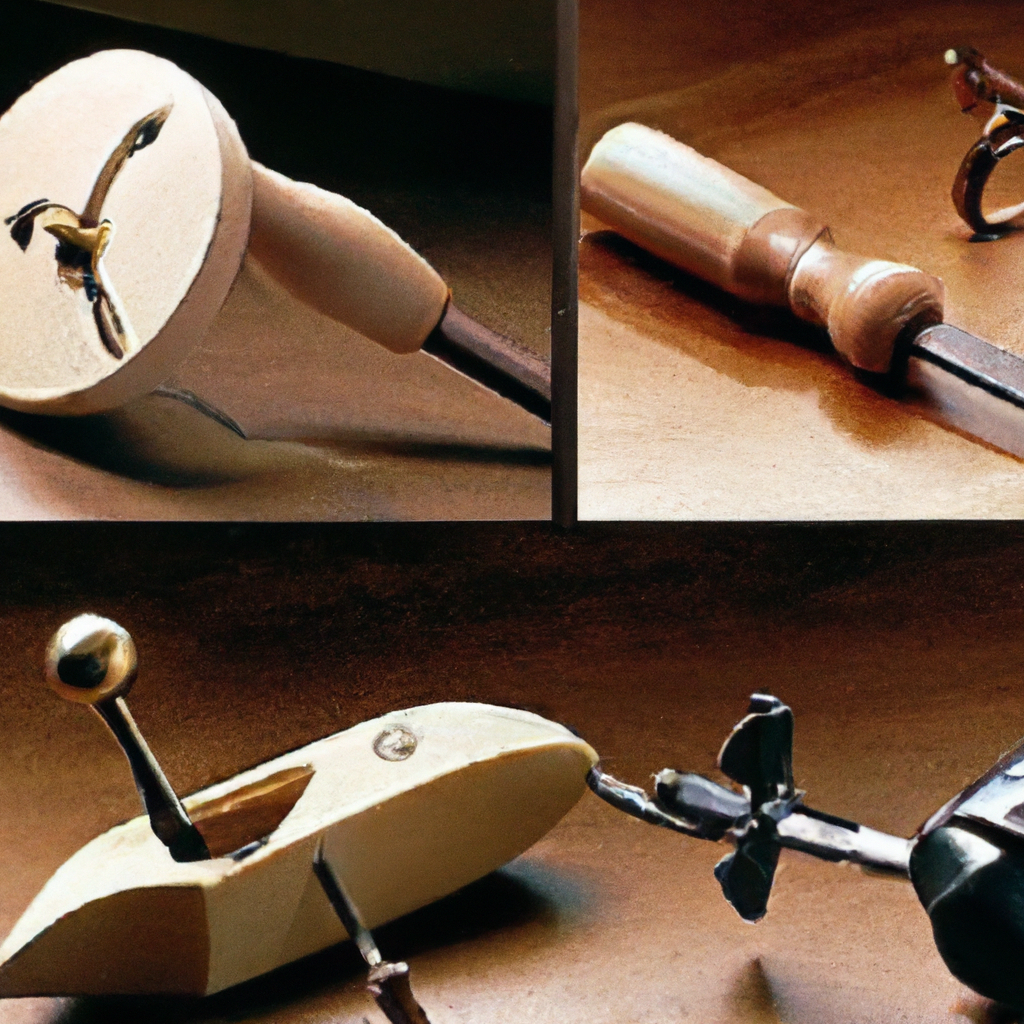If you’re a woodworking enthusiast or enjoy solving puzzles, then get ready to put on your thinking cap! In the world of woodworking, the importance of fasteners cannot be overlooked. They are the unsung heroes that bring those beautifully crafted pieces together. But today, we have a mystery to solve. The New York Times has given us a clue about woodworking fasteners, and it’s up to you to unlock the secret behind it. Get ready to embark on a thrilling woodworking journey as we unravel the mystery of the woodworking fasteners nyt clue.

Woodworking Fasteners NYT Clue
Welcome to the comprehensive guide on woodworking fasteners! If you’re a woodworking enthusiast or just starting out in the craft, understanding the different types of fasteners and their uses is essential. In this article, we will explore the various types of woodworking fasteners, their common applications, factors to consider when choosing the right fasteners, terminology, safety considerations, installation tips, maintenance and repair, alternative methods, and recent innovations in the world of woodworking fasteners.
1. Introduction to Woodworking Fasteners
1.1 Definition of Woodworking Fasteners
Woodworking fasteners refer to the hardware used to join and secure wooden components together. These fasteners come in various shapes and sizes, each serving a specific purpose in woodworking projects.
1.2 Importance of Woodworking Fasteners
Woodworking fasteners play a crucial role in the structural integrity and overall strength of wooden projects. They provide stability, durability, and the ability to disassemble and reassemble parts as needed.
1.3 Historical Overview of Woodworking Fasteners
Throughout history, woodworkers have used different types of fasteners to bring their creations to life. From simple wooden pegs used by early civilizations to the modern screws and adhesives we use today, the evolution of woodworking fasteners mirrors the advancements in technology and craftsmanship.
2. Types of Woodworking Fasteners
2.1 Nails
Nails are one of the oldest and most commonly used fasteners in woodworking. They come in various sizes and types, such as finishing nails, brad nails, and common nails. Nails provide a quick and easy way to join wooden components, but they may not offer as much holding power as other fasteners.
2.2 Screws
Screws are versatile fasteners that provide strong and reliable connections. They come in different thread patterns, lengths, and heads to suit various woodworking applications. Screws offer excellent holding power and allow for disassembly and reassembly when needed.
2.3 Dowels
Dowels are cylindrical rods made of wood or other materials used to reinforce joints and provide alignment in woodworking projects. They offer a clean and aesthetically pleasing way to connect wooden components, particularly in furniture and cabinetry construction.
2.4 Bolts and Nuts
Bolts and nuts are heavy-duty fasteners primarily used in structural applications or when extra strength is required. They consist of a threaded bolt and a nut that holds the components together. Bolts provide a secure connection but may require additional tools for installation.
2.5 Staples
Staples are commonly used in upholstery and carpet installation, where holding power and speed are essential. They are ideal for securing thin materials or attaching fabric to wooden frames.
2.6 Joinery Techniques
Joinery techniques, such as mortise and tenon joints, dovetail joints, and finger joints, rely on precise cuts and interlocking mechanisms to create strong connections without the need for additional fasteners. These techniques are often used in fine woodworking and cabinetry.
2.7 Adhesives
While not always considered traditional fasteners, adhesives play a vital role in woodworking. Wood glues, epoxy, and other adhesives provide strong bonds between wooden components and are particularly useful when joining large surface areas or difficult-to-reach joints.
3. Common Uses of Woodworking Fasteners
3.1 Furniture Construction
Woodworking fasteners are extensively used in furniture construction, whether it’s for assembling tables, chairs, beds, or cabinets. Fasteners like screws, dowels, and adhesive play a crucial role in ensuring the longevity and stability of furniture pieces.
3.2 Cabinetry and Joinery
Cabinetry and joinery rely heavily on fasteners to connect panels, drawers, doors, and other components together. Whether it’s using screws and dados or traditional joinery techniques like dovetailing, the selection of proper fasteners is crucial to ensure the durability and functionality of cabinets and joinery projects.
3.3 Flooring and Decking
In flooring and decking applications, fasteners need to withstand heavy foot traffic, moisture, and weather conditions. Nails, screws, and specialized deck fasteners are commonly used to secure flooring boards and decking materials, ensuring a stable and long-lasting finish.
3.4 Framing and Structural Applications
Woodworking fasteners play a crucial role in framing and structural applications, such as building houses, sheds, or other large structures. Bolts, nails, screws, and metal connectors are used to create strong connections between load-bearing components, ensuring structural integrity and safety.
3.5 Woodworking Art and Crafts
Woodworking fasteners find application in artistic and craft projects as well. From small sculptures to intricate wooden art pieces, fasteners like screws, dowels, and adhesives are used to create unique and visually appealing creations.

4. Factors to Consider When Choosing Woodworking Fasteners
4.1 Material Compatibility
One of the essential factors to consider when selecting woodworking fasteners is material compatibility. Different fasteners work better with specific wood types, such as softwoods or hardwoods. Choosing the right fastener material and coating prevents compatibility issues and ensures a secure connection.
4.2 Strength and Load Capacity
The strength and load capacity required for a woodworking project should dictate the type and size of fasteners used. Structural applications require heavy-duty fasteners capable of withstanding significant loads, while lighter projects may not require as much strength.
4.3 Corrosion Resistance
If the woodworking project will be exposed to moisture or outdoor elements, choosing corrosion-resistant fasteners becomes vital. Stainless steel, galvanized, or coated fasteners are excellent choices to prevent rust and degradation over time.
4.4 Aesthetic Considerations
In certain woodworking projects, the visibility of fasteners may affect the overall aesthetic appeal. Choosing fasteners that can be concealed or match the project’s design can enhance the visual appeal of the final product.
4.5 Cost and Availability
Consider the cost and availability of the fasteners when planning a woodworking project. Balancing budget constraints while ensuring the availability of the required fasteners is crucial for a seamless project.
5. Understanding Woodworking Fastener Terminology
5.1 Shank
The shank refers to the body of the fastener, excluding the head. It can be smooth, threaded, or ribbed, depending on the type of fastener.
5.2 Head
The head is the top part of a fastener that provides a bearing surface for driving or securing the fastener. Different types of heads include flat heads, round heads, or countersunk heads.
5.3 Threads
Threads are the ridges that spiral around the shank of a threaded fastener. They allow the fastener to be turned, securing it into place.
5.4 Point
The point of a fastener is the tapered end that makes it easier to insert into the material being fastened. Different points are designed for specific applications, such as self-drilling points for easier installation.
5.5 Drive Types
Drive types refer to the shape of the recess on the fastener’s head, which accommodates a corresponding tool for driving or tightening. Common drive types include Phillips, slotted, Torx, and square drives.
5.6 Common Sizing Systems
Woodworking fasteners are categorized into various sizing systems, including gauge, length, and thread count. Understanding these sizing systems ensures the selection of the appropriate fasteners for a project.

6. Important Safety Considerations for Using Woodworking Fasteners
6.1 Personal Protective Equipment (PPE)
Wearing the appropriate personal protective equipment, such as safety glasses, gloves, and ear protection, is crucial when working with woodworking fasteners. PPE provides protection against potential injuries from flying debris, sharp edges, and loud noises.
6.2 Precautions for Power Tools
Many woodworking fasteners require the use of power tools for installation. It is important to follow safety guidelines and instructions provided by the manufacturer to avoid accidents or injuries.
6.3 Proper Handling and Storage
Woodworking fasteners should be handled and stored properly to prevent injuries. Avoid mishandling them or leaving them scattered on work surfaces, as they can pose a safety hazard.
6.4 Pre-drilling and Pilot Holes
Pre-drilling or using pilot holes is essential to prevent splitting or damage to the wood. This practice also facilitates the installation of fasteners, ensuring a secure connection without compromising the material’s integrity.
7. Tips and Techniques for Installing Woodworking Fasteners
7.1 Choosing the Right Fastener for the Job
Selecting the appropriate fastener for the specific woodworking task is crucial. Consider the material being joined, load requirements, and aesthetic preferences. Consulting with experts or researching reliable sources can help in making informed decisions.
7.2 Measuring and Marking
Accurate measuring and marking of the locations for fasteners are essential for proper installation. Precision in measurements can prevent errors and ensure a professional-looking finished project.
7.3 Drilling and Driving Techniques
Using the correct drilling and driving techniques helps prevent damage and ensures a strong connection. Follow manufacturer recommendations and use the appropriate tools and accessories for the specific fastener being used.
7.4 Countersinking and Pilot Holes
When necessary, countersinking the fastener head or using pilot holes enhances the overall appearance and stability of the project. These techniques help keep the fastener flush with the surface or prevent wood from splitting during installation.
7.5 Joinery Methods
Exploring different joinery methods provides opportunities to create strong connections without relying solely on fasteners. Experimenting with mortise and tenon joints, dovetail joints, or pocket hole joinery techniques can expand your woodworking skills and options.

8. Maintaining and Repairing Woodworking Fasteners
8.1 Cleaning and Lubricating
Regular cleaning and lubrication of woodworking fasteners can help prevent rust, corrosion, and binding. Use appropriate cleaning methods and lubricants to ensure smooth operation and extend the lifespan of the fasteners.
8.2 Replacing Damaged Fasteners
Over time, fasteners may become damaged or worn out. Promptly replacing these fasteners is important to maintain the structural integrity and overall functionality of the project.
8.3 Strengthening Loose Fasteners
If fasteners become loose over time, reinforcing them with additional fasteners or adhesives can help restore stability. Take appropriate measures to tighten or reinforce loose fasteners to prevent accidents and ensure long-lasting durability.
8.4 Removing Stripped Fasteners
Stripped or damaged fasteners can be challenging to remove. Various techniques, such as using specialized extraction tools or carefully drilling them out, can help safely remove stripped fasteners without causing further damage.
8.5 Treating Corrosion
If woodworking fasteners show signs of corrosion, it is important to treat them to prevent further damage. Depending on the extent of the corrosion, methods like sanding, rust removers, or replacing the fasteners may be necessary.
10. Recent Innovations in Woodworking Fasteners
10.1 Advances in Corrosion-resistant Coatings
Technological advancements have led to the development of new coatings that provide enhanced corrosion resistance for woodworking fasteners. These coatings, such as ceramic or composite materials, ensure durability even in harsh environments.
10.2 Eco-friendly Fastener Materials
As sustainability becomes increasingly important, eco-friendly fastener materials are gaining popularity. Fasteners made from recycled materials or renewable resources reduce environmental impact while maintaining performance.
10.3 Self-driving Fasteners
Self-driving fasteners, equipped with special features like drill bits or pre-drilling capabilities, simplify the installation process. These innovative fasteners help save time and effort in woodworking projects.
10.4 Smart Fastening Technologies
Advances in smart technologies have also found their way into woodworking fasteners. Innovative fasteners equipped with sensors or indicators can provide real-time feedback on tightness, torque, or other important metrics during installation, ensuring optimal quality and safety.
In conclusion, woodworking fasteners are essential components in any woodworking project, providing stability, durability, and aesthetic appeal. Understanding the different types of fasteners, their uses, and the factors to consider when selecting them, allows woodworkers to create functional and beautiful pieces with confidence. By following safety guidelines, mastering installation techniques, and staying informed about recent innovations, woodworkers can elevate their craft and unlock endless possibilities in the world of woodworking.

